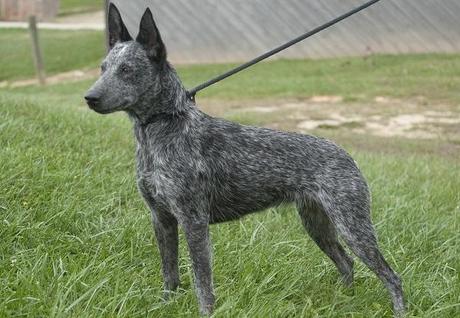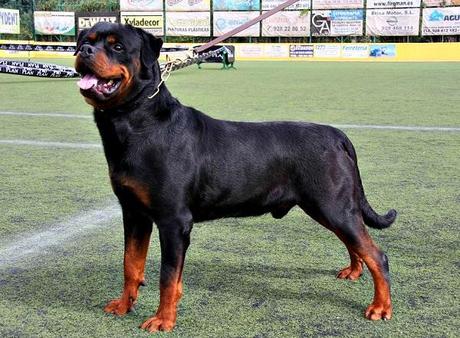Man’s best friend isn’t always all that bright, but many dogs have a high level of intelligence hidden beneath a friendly, sometimes clumsy appearance. Individual dogs have shown incredible brilliance, including specimens such as Chaser, a border collie who has learned to discern the names of over 1,000 individual items.
Other dogs have demonstrated a propensity for detecting contraband, even when buried in suitcases. In fact, you can even train your dog online with various courses and programs designed to help you. Over time, certain breeds have distinguished themselves as far as being more trainable and better at figuring out puzzles than the others and have proven themselves to be better-working dogs, often in the fields of herding or protection. Here are the ten smartest dog breeds that are also the easiest dogs to train…

10. German Shepherd
Bred to work, German Shepherds needed the intelligence to learn commands while also needing to be bright enough to think on their own while herding. This combination has turned them into top-notch animal herders but has served us, humans, even more. Their combination of intelligence and muscle makes them perfect police and military dogs, with a certain level of intimidation from their appearance.

9. Australian Cattle Dog (Blue Heeler)
Highly energetic and extremely destructive when they don’t receive enough attention or exercise, this breed is also very independent. This makes for a dog that is very trainable but also one that will not necessarily follow that training and will end up thinking for themselves at times, going against what the owner wants. Despite this independence, or partially because of it, Australian Cattle Dogs excel in dog sports such as competition obedience and agility competitions. They were bred to be herders and will naturally try and herd people and other pets.

8. Shetland Sheepdog
Often thought to be a miniature Rough Collie, the Sheltie is actually a mix of multiple breeds from the Shetland Isles, including spaniels and native Shetland herding dogs from the Spitz family. Shelties are capable of learning most commands in 5 repetitions or less and will then obey a command the first time it is given an average of 95% of the time. They need plenty of intellectual stimulation and have a habit of developing phobias and nervousness if enough is not provided.

7. Doberman Pinscher
The classic Doberman look is of muscle and aggression, but they are not as nature belies their appearance. They can be easily trained, have demonstrated superior intelligence, and are generally fearless, which has led to them being a top breed for Schutzhund. They are very perceptive and extremely loyal, making them dangerous when trained to be dominant. Left to their own devices, they will be docile and lazy but also will manage to find new and creative ways to get in trouble on a regular basis.

6. Golden Retriever
Golden Retrievers have become valuable helpers for humans, capable of learning hundreds of commands. They have a level of loyalty and patience that, when combined with their intelligence, makes them the perfect pooch for tasks such as guiding the blind or working as rehab dogs. They are generally docile, love to please their owners and make good family dogs. Unlike most of the other dogs on the list, they do not require a high level of mental stimulation on a daily basis.

5. Poodle
Don’t let the terrible styling inflicted on these guys by their owners fool you; they only look dumb. The styling itself is actually functional, meant to keep the poodle’s important parts warm while reducing the amount of fur so they can swim more easily. They are easy to train but can be troublesome when not provided with enough stimulation.

4. Labrador Retriever
An easily trainable sporting dog, retrievers are alert and gentle. It is the most popular breed of dog in the world, and retrievers are incredibly popular as assistance or therapy dogs due to their loving nature and calm demeanour. One outstanding example of their suitability for assistance work was a dog named Endal, who was named Dog of the Millennium by Dogs Today magazine due to his work with a man named Allen Parton. Parton’s disabilities were so great that Endal had to learn commands and signals far beyond most service dogs, including learning how to use an ATM and learning how to treat his owner when he would fall unconscious in the bath, including pulling the drain plug, moving his owner, and going for help.

3. Border Collie
As demonstrated by Chaser, border collies are teachable. The herding breed is highly trainable and energetic, and athletic, a combination of traits that make them incredible at controlling livestock but also a handful when not at work. They are very motion-sensitive, given to chasing anything that moves in their sightline and will try to herd anything, including children and others. They need plenty of mental and physical stimulation and tend to act out when this is not provided, being destructive towards furniture and shredding up yards and landscaping out of boredom.

2. Papillon
A high-energy toy breed from the Spaniel family, the Papillon is out of place on the list, as all the other dogs were bred as working dogs. Bred as companion dogs for French royalty, they are wonderful companions but are also distrustful of new people. Their Spaniel lineage has given them a high amount of energy that, combined with a high level of intelligence and confidence, can sometimes lead the breed into trouble. All of these traits, however, have made them into excellent watchdogs.

1. Rottweiler
Powerful, with an intimidating appearance and an undeserved reputation for being a violent breed, all the Rottweiler really wants to do is work. They are an ancient breed, having been used as a combined herding and livestock protection dog for millennia. They are one of the more flexible breeds when it comes to training, as they are suitable for anything from a herder, to an obedience competitor, to a police dog. They are popular among cattlemen because, unlike most other herding breeds, they will physically use their bodies to move stubborn livestock, regardless of the danger involved.

